Beginner's Guide to Exploring Gouache Painting
Welcome to the vibrant world of gouache painting! If you’ve ever been captivated by the rich, opaque colors that seem to leap off the canvas, you’re in the right place. This guide is designed to introduce you to the exciting techniques and tools that will help you unleash your creativity with this unique medium. Whether you’re a complete novice or have dabbled in other forms of painting, gouache offers a refreshing approach that combines the best of watercolor and acrylic paints.
Gouache is not just any paint; it’s a medium that invites exploration and experimentation. Imagine a world where your brush strokes can create vibrant landscapes, detailed illustrations, or abstract masterpieces. With gouache, the possibilities are endless. As you embark on this artistic journey, you’ll discover how to manipulate color, texture, and form to express your unique vision. So grab your brushes, and let’s dive into the essentials of gouache painting!
Before we get our hands messy with paint, let’s take a moment to understand what makes gouache so special. Unlike traditional watercolors, gouache is known for its opacity. This means that when you apply it to paper, it covers the surface completely, allowing for vibrant colors that don’t show the underlying layer. This quality makes it an excellent choice for artists who want to create bold, striking images.
Another fantastic aspect of gouache is its reworkability. If you’re not satisfied with a particular area of your painting, you can easily re-wet and adjust it. This flexibility is akin to having a second chance with your artwork, which is a comforting thought for beginners who might feel intimidated by the permanence of other mediums. Additionally, gouache dries to a matte finish, which can add a unique aesthetic to your pieces, setting them apart from glossy acrylics.
Now that we have a grasp on what gouache is, let’s talk about the essential tools and materials you’ll need to get started. Having the right supplies can make a significant difference in your painting experience. Here’s a quick rundown of what you’ll want to gather:
- Gouache Paint: Choose between student-grade and professional-grade options based on your budget and commitment level.
- Brushes: Various shapes and sizes will help you create different effects.
- Paper: Look for heavy-weight paper designed for gouache to prevent warping.
- Palettes: A flat surface for mixing colors is essential.
With these tools in hand, you’re ready to start exploring the world of gouache painting. Remember, the journey is just as important as the destination, so don’t rush through it. Take your time, experiment, and most importantly, have fun!
As you embark on your gouache painting adventure, you might have some questions. Here are a few common queries that beginners often ask:
- Can I mix gouache with other mediums? Yes! Gouache can be mixed with watercolors and even acrylics to create interesting effects.
- How do I store my gouache paints? Keep your gouache paints in a cool, dry place, and make sure to close the lids tightly to prevent them from drying out.
- What is the best way to clean my brushes? Use warm soapy water to clean your brushes after each painting session to maintain their shape and longevity.
With these tips and insights, you’re well on your way to becoming a gouache painting enthusiast. Remember, every artist was once a beginner, so embrace the learning process and enjoy every moment of your creative journey!
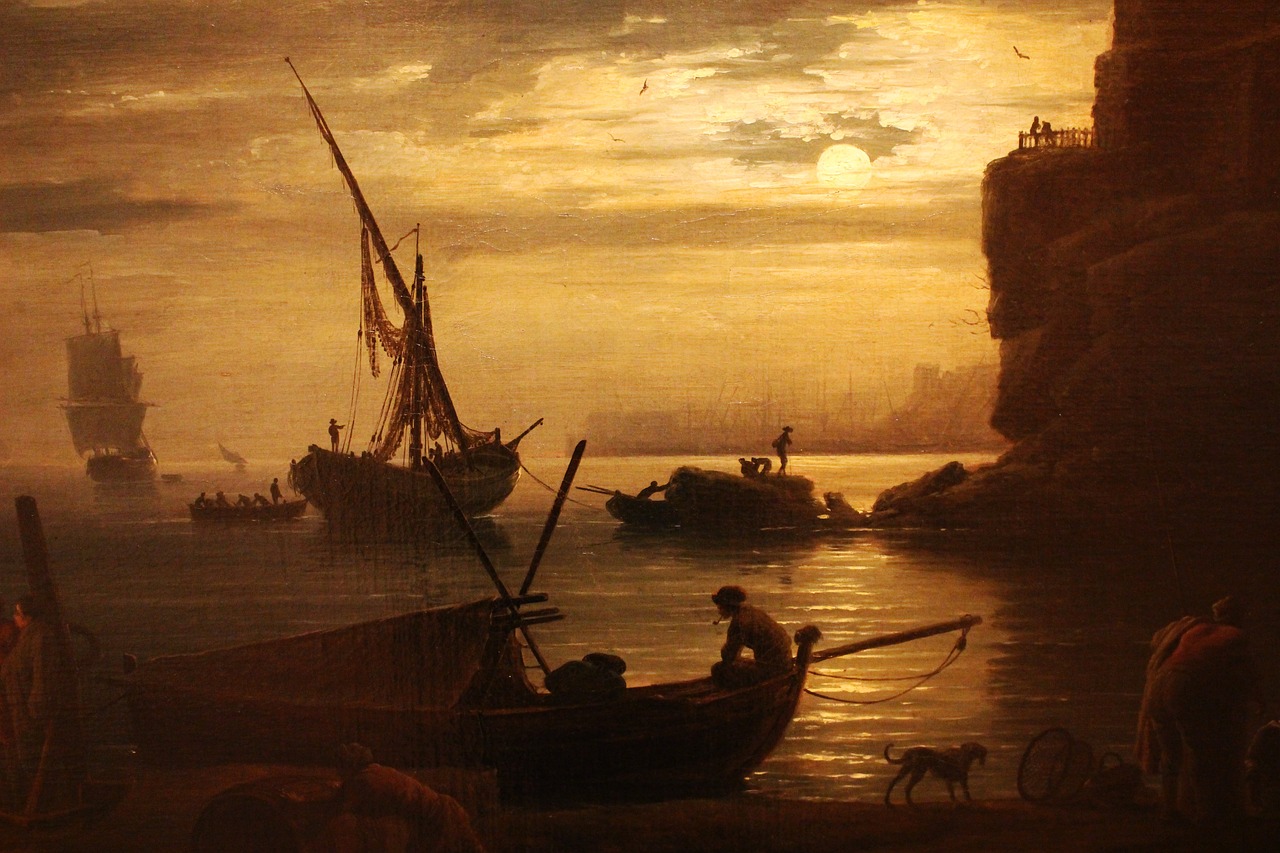
Understanding Gouache: What Sets It Apart
Gouache is more than just a paint; it's a vibrant gateway into the world of color and creativity. Imagine a medium that combines the fluidity of watercolor with the opacity of acrylic—this is exactly what gouache offers. Unlike traditional watercolors that allow light to pass through, gouache is known for its rich opacity. This means you can achieve stunning, bold colors that stand out on the canvas, making your artwork pop with life and energy.
One of the most fascinating aspects of gouache is its reworkability. If you’ve ever painted with watercolor, you know how tricky it can be to correct mistakes. With gouache, however, you can easily rehydrate dried paint with a little water, allowing for corrections and adjustments. This quality makes it an excellent choice for beginners who may still be finding their footing in the art world. You can layer colors without the fear of losing your previous work, which is a game-changer when it comes to creating complex pieces.
Another key characteristic that sets gouache apart is its versatility. Whether you’re painting on paper, canvas, or even wood, gouache adheres beautifully to a variety of surfaces. This opens up a plethora of creative possibilities, allowing you to experiment and explore different textures and finishes. You can use it straight from the tube for a thick, impasto effect or dilute it with water for a more translucent look, similar to watercolor. The choice is yours, and that’s the beauty of gouache!
To sum it up, gouache is a unique blend of properties that makes it an exciting medium for artists of all levels. Here’s a quick comparison with other popular paint types:
| Paint Type | Opacity | Reworkability | Best Surface |
|---|---|---|---|
| Gouache | High | Yes | Paper, Canvas, Wood |
| Watercolor | Low | No | Watercolor Paper |
| Acrylic | Medium | No | Canvas, Wood, Paper |
So, if you're looking for a medium that combines the best of both worlds—vibrancy and flexibility—gouache is undoubtedly worth exploring. It's like having the freedom to paint with watercolors but with the confidence that you can make changes and corrections along the way. Dive into this colorful adventure and unleash your creativity with gouache!
- What is gouache made of? Gouache is made from pigment, water, and a binding agent, typically gum arabic, which gives it its unique properties.
- Can you mix gouache with other mediums? Yes, gouache can be mixed with watercolors and acrylics, but it's best to use them separately for the best results.
- Is gouache suitable for beginners? Absolutely! Its reworkability and vibrant colors make it a fantastic choice for those just starting their artistic journey.
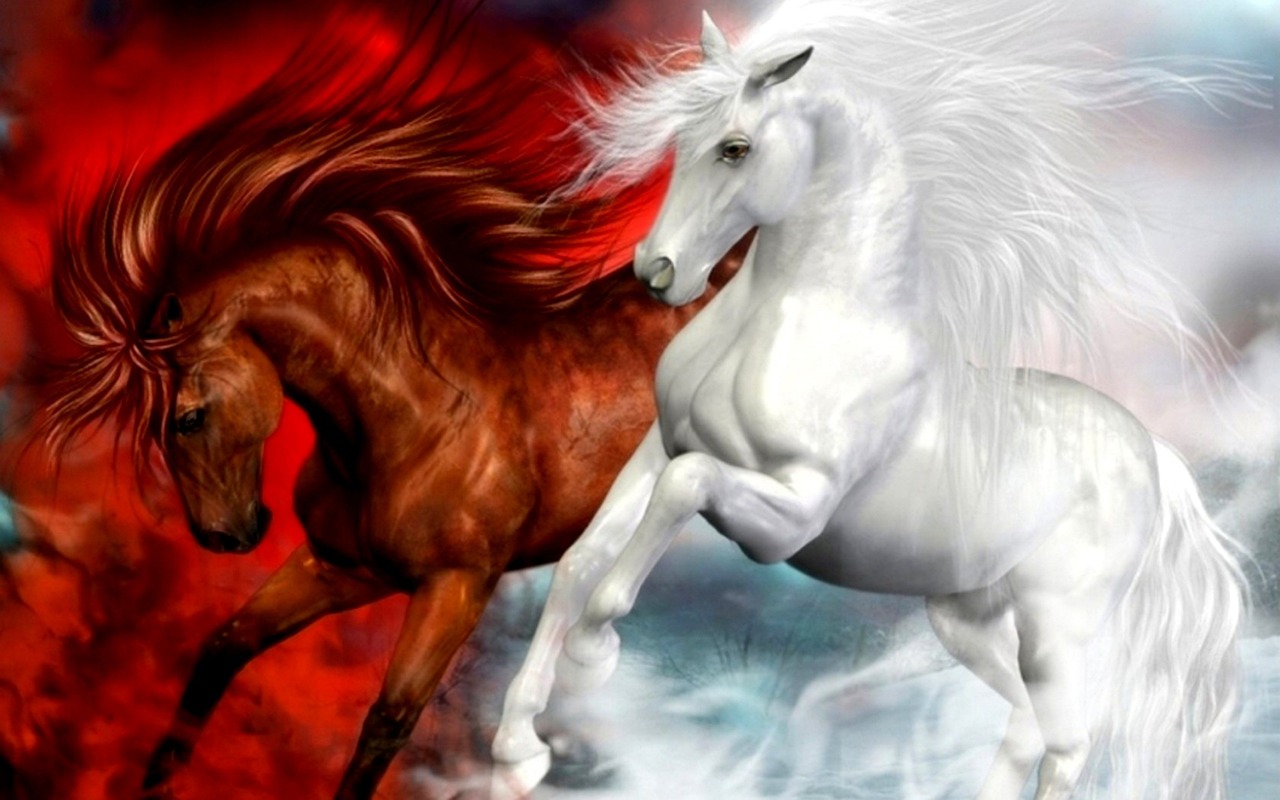
Essential Tools and Materials for Gouache
Before you plunge into the vibrant world of gouache painting, it's essential to gather the right tools and materials. Think of this as assembling your artist's toolkit, where each item plays a crucial role in helping you express your creativity. The beauty of gouache lies not only in its vivid colors but also in the flexibility it offers. So, let’s explore what you’ll need to set the stage for your artistic journey.
First and foremost, you’ll need gouache paint itself. There are various brands and types available, ranging from student-grade to professional-grade. Student-grade gouache is generally more affordable and suitable for beginners, while professional-grade offers richer pigments and better lightfastness. When selecting your gouache, consider factors like your budget and the level of quality you aspire to achieve in your artwork.
Next up are brushes! The type of brush you choose can significantly affect the outcome of your painting. Gouache can be applied in various ways, and different brushes can create distinct effects. Here’s a quick rundown of some common brush types:
- Round Brushes: Great for detail work and fine lines.
- Flat Brushes: Perfect for broad strokes and filling in larger areas.
- Filbert Brushes: A mix between round and flat, ideal for blending.
- Fan Brushes: Useful for texture and special effects.
But don’t forget about the paper! The right paper is crucial for achieving the best results with gouache. Unlike watercolor, gouache is opaque, and using the correct type of paper can prevent warping and help the paint adhere better. Look for papers that are specifically designed for gouache or heavy watercolor paper with a weight of at least 200 gsm. The texture of the paper can also influence the final appearance of your artwork, so consider whether you prefer a smooth or textured surface.
Additionally, you’ll need a palette for mixing your colors. This can be anything from a traditional wooden palette to a simple ceramic plate. The key is to have a surface that allows you to blend and mix your colors effectively. If you’re planning to work with a lot of colors, consider investing in a palette with multiple wells to keep your hues organized.
Lastly, don’t overlook the importance of water containers and paper towels. Water is essential for cleaning your brushes and diluting the paint, while paper towels are handy for wiping brushes and correcting mistakes. It's the little things that can make a big difference in your painting experience!
To summarize, here’s a quick checklist of essential tools and materials for gouache painting:
| Item | Purpose |
|---|---|
| Gouache Paint | Base medium for painting |
| Brushes | Application and effects |
| Paper | Surface for painting |
| Palette | Mixing colors |
| Water Container | Cleaning brushes |
| Paper Towels | Wiping brushes and correcting |
With these essential tools and materials at your fingertips, you’re well on your way to unleashing your creativity with gouache. Remember, the journey of painting is as important as the destination, so take your time to experiment and enjoy the process!
1. Can I use regular watercolor paper for gouache?
While you can use watercolor paper, it's best to choose a heavier weight paper designed for gouache to prevent warping.
2. How do I clean my brushes after using gouache?
Simply rinse your brushes in water and use soap if necessary. Make sure to reshape the bristles before letting them dry.
3. Is gouache paint permanent?
Gouache is not permanent like acrylics, so it's important to protect your finished pieces from moisture and direct sunlight.
4. Can I mix gouache with other mediums?
Yes! Gouache can be mixed with watercolors and even acrylics, but be sure to test how they interact on a small scale first.

Choosing the Right Gouache Paint
When it comes to gouache painting, one of the most crucial decisions you'll make is selecting the right type of gouache paint. This choice can significantly influence the quality and vibrancy of your artwork. Gouache paints are generally categorized into two main types: student-grade and professional-grade. Understanding the differences between these two can help you make an informed decision based on your artistic goals and budget.
Student-grade gouache is typically more affordable and often contains less pigment, which means it may not offer the same level of vibrancy or opacity as its professional counterpart. However, this doesn’t mean you should overlook them entirely! They can be a fantastic option for beginners who are just starting out and want to practice without breaking the bank. They’re also great for experimenting with techniques and styles, allowing you to develop your skills without the pressure of using high-end materials.
On the other hand, professional-grade gouache is formulated with higher pigment concentrations, resulting in richer colors and better lightfastness. This means your artwork will maintain its vibrancy over time, making it a worthwhile investment for those looking to create pieces for display or sale. If you're serious about gouache painting, investing in professional-grade paints can elevate your work to a whole new level.
When choosing gouache, consider the following factors:
- Color Range: Look for brands that offer a wide variety of colors. A diverse palette allows for greater creativity and experimentation.
- Opacity: Some paints are more opaque than others. If you prefer a medium that allows for solid coverage, opt for gouache known for its opacity.
- Mixability: Check how well the paints mix with each other. Good mixability can help you create a broader range of hues.
Additionally, it's worth considering the brand reputation. Well-known brands often have a proven track record of quality, which can provide peace of mind as you embark on your gouache journey. Brands like Winsor & Newton, Holbein, and Schmincke are popular choices among artists, each offering a variety of options to suit different needs.
Ultimately, the best gouache paint for you will depend on your personal preferences, budget, and artistic goals. Whether you start with student-grade options or dive right into professional-grade paints, the key is to experiment and find what works best for you. Remember, the joy of painting lies not just in the materials you use but in the creativity and expression you bring to your canvas!
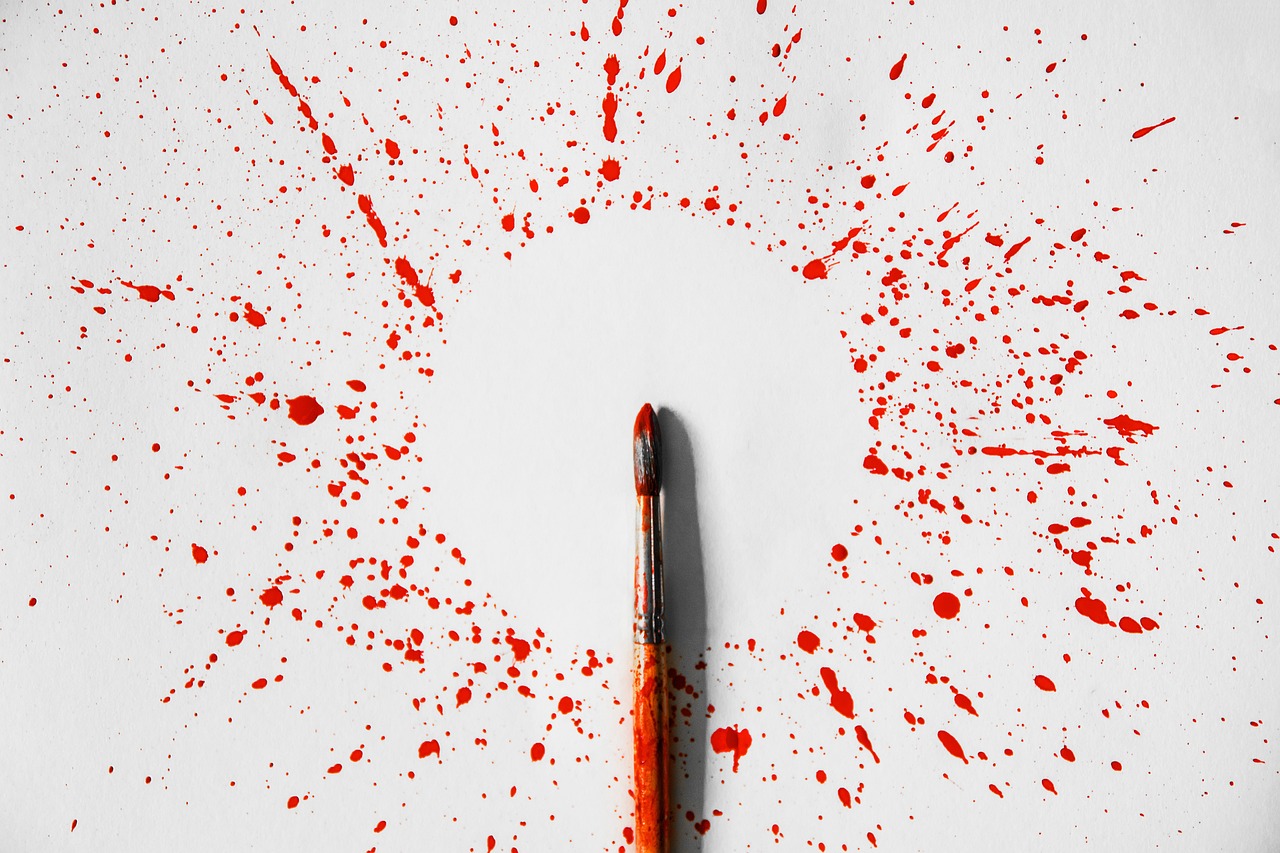
Brushes: Types and Their Uses
When it comes to gouache painting, the right brush can be your best friend. Choosing the appropriate brush type can significantly affect the outcome of your artwork. Gouache is a medium that lends itself well to a variety of brush techniques, and understanding the different types of brushes available can help you unleash your creativity. So, let’s dive into the fascinating world of brushes and discover how they can transform your gouache experience!
First off, you’ll want to familiarize yourself with the two primary categories of brushes: synthetic and natural hair. Synthetic brushes are typically more affordable and are designed to hold their shape well, making them great for beginners who are still developing their skills. On the other hand, natural hair brushes, like those made from sable or squirrel, offer superior paint-holding capacity and can create softer, more nuanced strokes. If you're just starting out, you might find a good mix of both types to be beneficial.
Next, let’s talk about the various shapes of brushes and how each one serves a unique purpose:
- Round Brushes: These brushes are versatile and can be used for fine details or broad strokes, depending on the size. They are perfect for creating delicate lines and intricate details.
- Flat Brushes: Ideal for covering larger areas, flat brushes are great for bold strokes and edge work. They can also be used for creating sharp lines and can be turned on their side for more control.
- Filbert Brushes: With a rounded edge, filbert brushes combine the qualities of both round and flat brushes. They are excellent for blending and creating soft edges, making them a favorite for portrait work.
- Detail Brushes: These tiny brushes are perfect for intricate work and fine details. They allow you to get into small areas and create precise lines, which can be crucial for adding depth to your paintings.
Now that you know the types of brushes, let’s discuss how to use them effectively. For instance, when using a round brush, try varying your pressure to create different line widths. A light touch will yield fine lines, while pressing harder will give you broader strokes. Similarly, with flat brushes, you can achieve a variety of effects by using the edge for fine lines or the flat side for larger areas. Experimentation is key! Don't hesitate to try different brushes for various techniques, as this will help you discover your personal style.
Cleaning your brushes is also an essential part of maintaining them and ensuring they last a long time. After each painting session, rinse your brushes thoroughly in water and gently reshape the bristles. For stubborn paint residue, a mild soap can work wonders. Remember, taking care of your brushes will ultimately enhance your gouache painting experience.
In conclusion, selecting the right brush and understanding how to use it can make a world of difference in your gouache painting journey. Whether you’re creating sweeping landscapes or intricate details, the right tools will empower you to express your artistic vision. So, gather your brushes, unleash your creativity, and let your gouache masterpieces come to life!
Q: Can I use regular watercolor brushes for gouache painting?
A: Yes, you can, but it's best to use brushes specifically designed for gouache to achieve optimal results. Gouache has a thicker consistency than watercolor, so brushes that can handle that texture will perform better.
Q: How do I know which brush to use for my project?
A: Consider the effect you want to achieve. For detailed work, opt for round or detail brushes. For larger areas, flat brushes are ideal. Don't hesitate to experiment with different brushes to see what works best for your style!
Q: How often should I clean my brushes?
A: It's essential to clean your brushes after every painting session. This will help maintain their shape and prolong their lifespan.
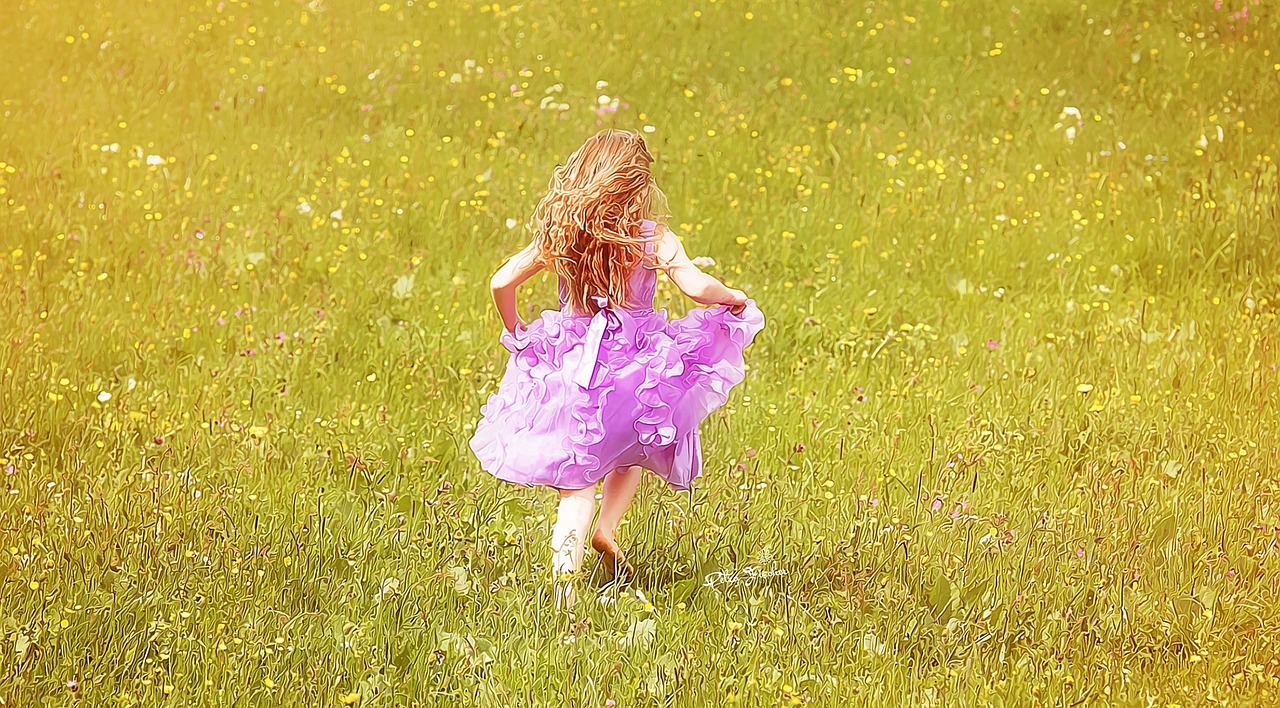
Paper Selection for Gouache Painting
Selecting the right paper for gouache painting is crucial to achieving the best results. Unlike watercolor, which thrives on absorbent surfaces, gouache requires a paper that can handle its unique properties. The ideal paper should be thick enough to support the weight of the paint and provide a surface that allows for layering and blending without warping or buckling. Generally, you’ll want to look for paper that has a weight of at least 200 gsm (grams per square meter) to ensure it can handle the moisture and thickness of gouache.
When it comes to texture, you have a few options to consider. Smooth paper is fantastic for detailed work and fine lines, allowing for crisp, clean edges. On the other hand, cold-pressed (noted as 'rough') paper offers a bit of texture that can add depth and interest to your paintings, making it perfect for more expressive strokes and washes. The choice between smooth and textured paper often comes down to your personal style and the effects you wish to achieve.
Additionally, you might encounter watercolor paper that is specifically designed for wet media, which can also work well with gouache. This type of paper is often made from 100% cotton, providing a luxurious feel and exceptional durability. However, it can be on the pricier side, so it’s a good idea to experiment with various types to find what suits your technique and budget best.
Here’s a quick comparison of different types of paper suitable for gouache:
| Type of Paper | Texture | Best For |
|---|---|---|
| Smooth Paper | Flat | Detailed work and fine lines |
| Cold-Pressed Paper | Textured | Expressive strokes and washes |
| Watercolor Paper | Varies (Smooth or Textured) | Durability and versatility |
In conclusion, the right paper can significantly enhance your gouache painting experience. Take the time to explore different options, and don’t hesitate to try out various brands and textures. As you practice, you’ll develop a better understanding of what works best for your style. Remember, the journey of discovering your artistic preferences is just as important as the final piece!
1. Can I use regular sketch paper for gouache painting?
Using regular sketch paper is not recommended for gouache because it may not hold up to the moisture and layering techniques. It’s best to opt for thicker, water-resistant paper.
2. What is the best weight for gouache paper?
A weight of 200 gsm or higher is ideal for gouache painting, as it provides the necessary support for the paint without warping.
3. Is it important to stretch paper before using gouache?
Stretching paper is generally not necessary for gouache, especially if you are using heavy-weight paper. However, if you notice warping, you might consider stretching it.
4. Can I use gouache on canvas?
Yes, you can use gouache on canvas, but it’s essential to prepare the surface properly to ensure the paint adheres well.

Basic Techniques for Beginners
Getting started with gouache painting can feel like stepping into a vibrant new world filled with possibilities. This medium is not just about slapping color onto paper; it's about mastering some fundamental techniques that will elevate your artwork. So, grab your brushes and let’s dive into the exciting basics!
One of the first techniques every beginner should master is layering. Layering involves applying multiple coats of paint to build depth and richness in your colors. Start with a lighter base layer and gradually add darker shades on top. This technique not only enhances the vibrancy of your artwork but also allows for corrections and adjustments as you go. Think of it as building a cake—each layer adds flavor and complexity!
Next up is glazing, which is a fantastic way to create luminous effects. Glazing involves applying a thin, transparent layer of color over a dried layer. This technique can change the hue of the underlying paint without completely covering it. Imagine the way sunlight filters through leaves; glazing can give your paintings that same ethereal quality. To achieve this, mix your gouache with water to create a translucent wash, and gently brush it over your dried work.
Another essential skill is blending. This technique allows you to create smooth transitions between colors, making your artwork feel more cohesive. Start by applying two colors side by side and then use a clean, damp brush to gently mix the edges where they meet. Think of it like blending a smoothie—too much blending can turn it into a mushy mess, so practice until you find that sweet spot!
For those interested in adding texture, dry brushing is a technique you won’t want to overlook. This method involves using a dry brush with minimal paint to create a scratchy, textured effect. It’s perfect for adding details like fur, grass, or any surface that needs a little extra character. Just remember to keep your brush almost dry; too much water will defeat the purpose!
As you practice these techniques, it’s essential to remember that mistakes are part of the learning process. Don’t be afraid to experiment and make adjustments. If something doesn’t look right, layer over it, glaze it, or blend it until it feels just right. Art is all about exploration, and gouache is a forgiving medium that allows for reworkability, making it ideal for beginners.
To help you visualize these techniques better, here’s a quick summary table:
| Technique | Description | Effect |
|---|---|---|
| Layering | Applying multiple coats of paint | Builds depth and richness |
| Glazing | Thin, transparent layer over dried paint | Creates luminous effects |
| Blending | Smooth transitions between colors | Makes artwork cohesive |
| Dry Brushing | Using a dry brush with minimal paint | Adds texture and detail |
As you embark on your gouache journey, remember that practice makes perfect. Each stroke is a step towards discovering your unique style, so embrace the process! With these basic techniques under your belt, you’ll be well on your way to creating stunning gouache masterpieces.
Q: Can I mix gouache with other types of paint?
A: Yes, you can mix gouache with watercolor and acrylics, but be mindful of how each medium behaves. It’s best to experiment on a separate sheet first.
Q: How do I clean my brushes after using gouache?
A: Rinse your brushes with water immediately after use. If the paint dries, you may need to use soap or a brush cleaner to remove it.
Q: Can I use gouache on canvas?
A: Absolutely! Gouache can be used on canvas, but it’s best to use a primed surface to achieve the best results.
Q: What if my gouache dries out?
A: Dried gouache can often be reactivated with water, so don’t throw it away! Just add a bit of water and mix until you get the desired consistency.

Color Mixing and Theory in Gouache
Understanding color theory is essential for any artist, especially when working with gouache. This vibrant medium offers a unique opportunity to explore color mixing, allowing you to create stunning palettes that can transform your artwork. Imagine standing in front of a blank canvas, your palette filled with an array of colors, and the possibilities are endless! The ability to mix colors effectively can elevate your work from ordinary to extraordinary.
One of the most exciting aspects of gouache is its opacity. Unlike watercolor, which can be quite transparent, gouache allows you to layer colors without losing vibrancy. This means you can create rich, deep hues or soft pastels depending on your mixing techniques. To get started, it's crucial to understand the primary colors: red, blue, and yellow. By mixing these colors, you can create secondary colors such as green, orange, and purple. The basic color wheel is a fantastic tool for visualizing these relationships.
| Primary Colors | Secondary Colors | Tertiary Colors |
|---|---|---|
| Red | Green | Red-Orange |
| Blue | Orange | Yellow-Orange |
| Yellow | Purple | Blue-Purple |
When mixing colors, it’s important to consider the value and saturation of the colors you’re working with. Value refers to how light or dark a color is, while saturation describes the intensity of the color. To achieve different values, you can add white to lighten a color or black to darken it. For saturation, adding a bit of gray can tone down a bright color, making it more muted and subtle. This is particularly useful when you want to create depth and dimension in your paintings.
Another fascinating aspect of gouache is the layering technique. By applying thin layers of color and allowing each layer to dry before adding the next, you can build up complex colors and textures. This method not only enhances the visual appeal but also gives you control over the final outcome of your piece. Don’t be afraid to experiment! Mixing colors directly on your palette or even on the canvas can lead to unexpected and delightful results.
As you dive deeper into gouache painting, you might find yourself asking, “How do I create harmonious color schemes?” A great way to achieve this is by using the complementary colors concept. Complementary colors are pairs of colors that, when combined, cancel each other out. For instance, red and green are complementary. When used together in your artwork, they can create striking contrasts that draw the viewer's eye.
Ultimately, mastering color mixing and theory in gouache is about practice and exploration. The more you experiment with different combinations and techniques, the more confident you will become in your color choices. So grab your brushes, unleash your creativity, and let the world of color mixing in gouache paint your artistic journey!
- What is the best way to mix colors in gouache? Start with the primary colors and experiment by adding small amounts of one color to another. Remember to keep track of your ratios!
- Can I use gouache on any type of paper? While you can use gouache on various types of paper, it's best to choose heavier, textured paper designed for wet media to prevent warping.
- How do I fix mistakes in gouache painting? One of the great things about gouache is that you can rework it after it dries. Simply wet the area and lift the paint with a clean brush or paper towel.
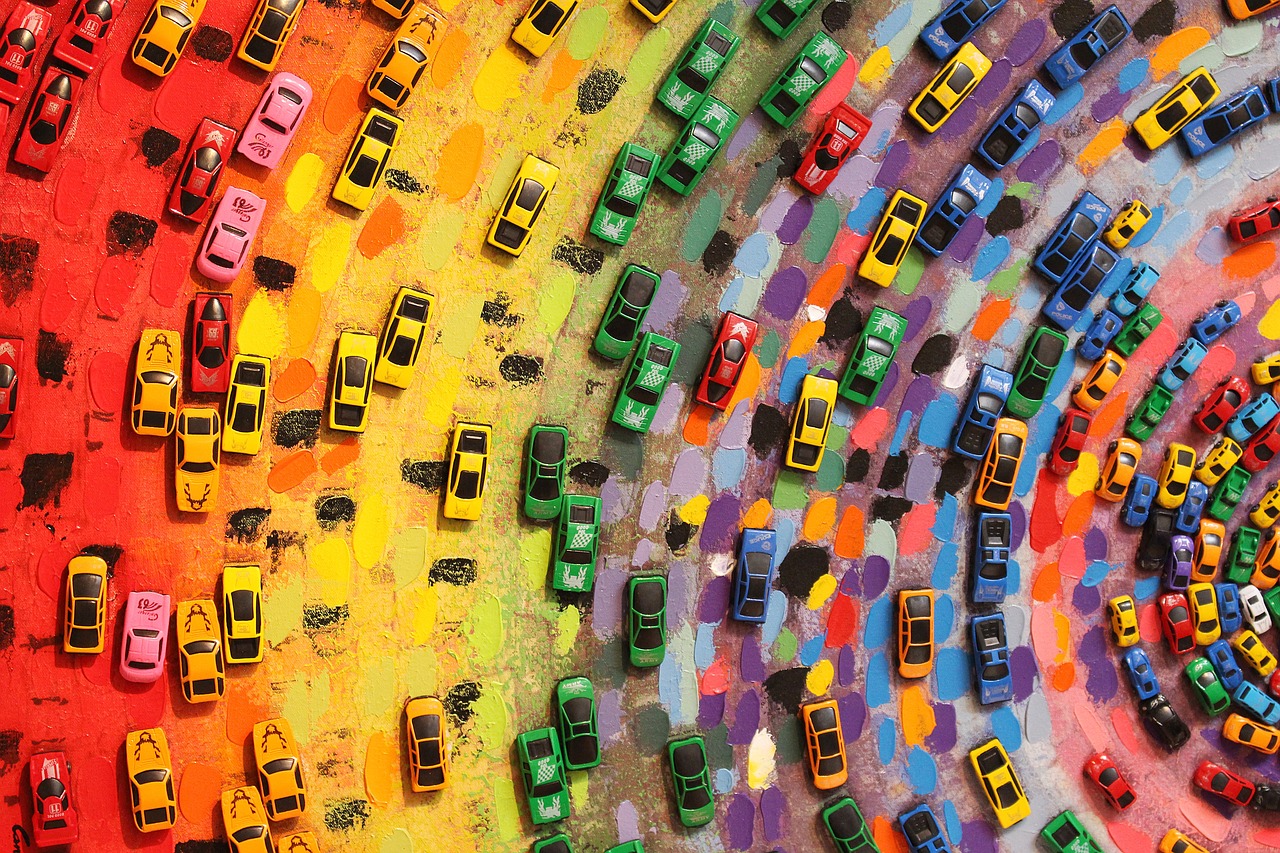
Creating Depth and Texture
When it comes to gouache painting, is like adding a secret ingredient to your favorite recipe—it transforms a simple dish into a culinary masterpiece. By incorporating various techniques, you can elevate your artwork from flat and uninspiring to vibrant and dynamic. Let's dive into some methods that can help you achieve that coveted three-dimensional effect in your paintings.
One of the most effective techniques for adding depth is through layering. This involves applying multiple layers of gouache paint, allowing each layer to dry before adding the next. Think of it like building a cake; each layer adds complexity and richness to the final product. You can start with a base layer of color and then gradually add darker shades to create shadows or lighter tones for highlights. The key is to be patient and allow each layer to dry completely, so your colors remain true and vibrant.
Another technique to consider is dry brushing. This method involves using a dry brush with minimal paint to create a textured effect on the surface of your painting. Imagine the soft, wispy clouds in the sky—achieving that look is possible with dry brushing. Simply load your brush with a small amount of gouache, then gently drag it across your paper. This technique is fantastic for adding subtle textures, like the rough bark of a tree or the delicate petals of a flower.
To further enhance the dimensionality of your work, consider using glazing. Glazing is the process of applying a thin, transparent layer of paint over a dried layer. This allows the underlying colors to show through while adding a new hue, creating a sense of depth and luminosity. For example, if you have a vibrant blue sky, adding a light wash of yellow can produce a stunning greenish hue that suggests sunlight filtering through the atmosphere.
Lastly, don't underestimate the power of textural tools. Items like sponges, palette knives, or even your fingers can be used to create interesting textures on your canvas. Experimenting with these tools can lead to unique effects that set your artwork apart. For instance, using a sponge can create a soft, dappled effect reminiscent of leaves rustling in the wind, while a palette knife can help you achieve bold, impasto strokes that stand out from the surface.
In summary, creating depth and texture in gouache painting is all about experimentation and practice. By layering colors, utilizing dry brushing, glazing, and playing with different tools, you can develop a rich and engaging visual experience in your artwork. So grab your brushes and let your creativity flow—your next masterpiece is just a stroke away!
- Can I mix gouache with other mediums? Yes, gouache can be mixed with watercolor and acrylics, but be cautious as it may alter the properties of the paint.
- How do I fix mistakes in gouache painting? One of the advantages of gouache is its reworkability. You can simply wet the area and lift the paint with a damp brush or paper towel.
- Is gouache suitable for beginners? Absolutely! Gouache is user-friendly and forgiving, making it a great choice for artists just starting out.
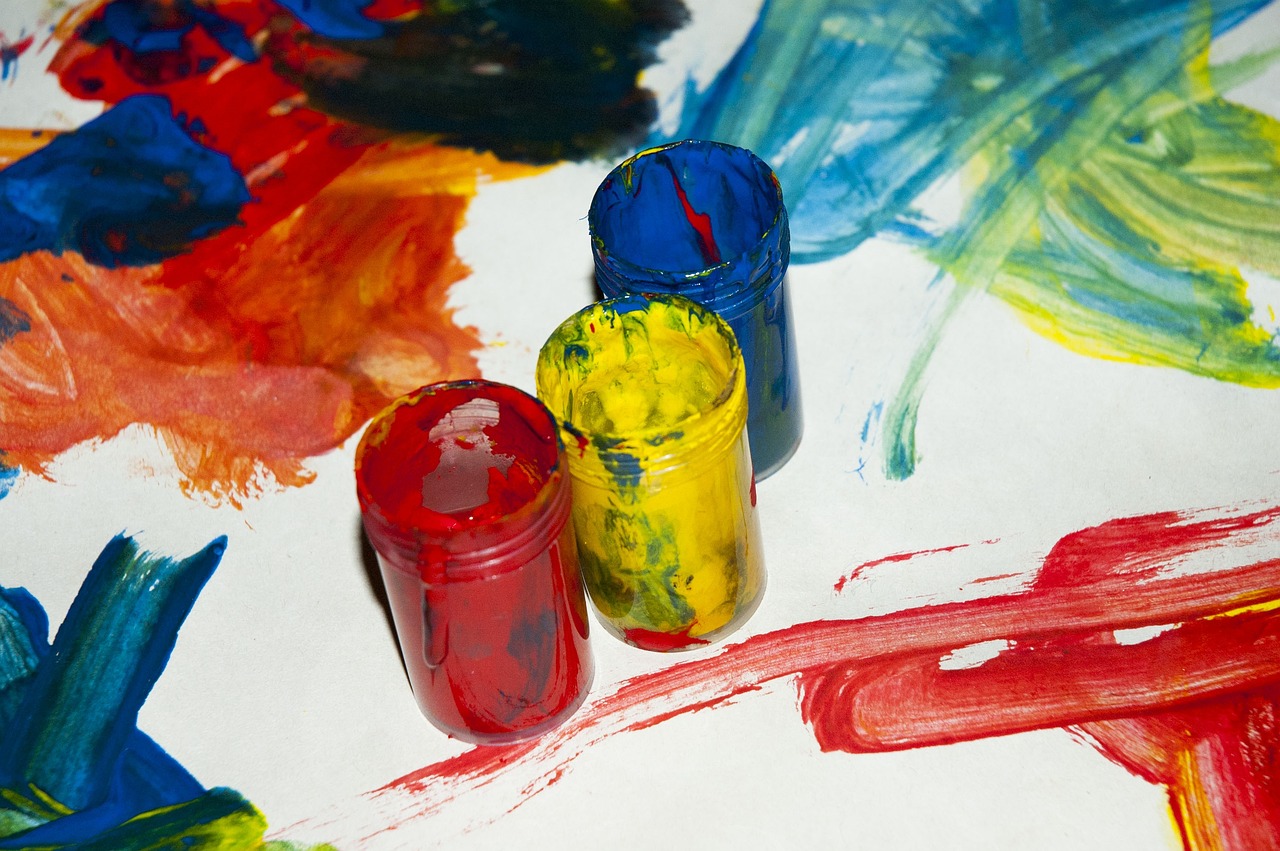
Common Mistakes and How to Avoid Them
When venturing into the vibrant world of gouache painting, it's easy to stumble upon a few common pitfalls that can hinder your creativity and lead to frustration. But fear not! Understanding these mistakes can not only save you time and resources but also enhance your artistic journey. One of the most prevalent errors beginners make is not properly mixing their gouache paints. Unlike other mediums, gouache requires a delicate balance of water to achieve the desired consistency. Too much water can dilute the color, making it appear washed out, while too little can result in a chalky finish. To avoid this, always start with a small amount of water and gradually add more until you reach the perfect blend.
Another frequent misstep is neglecting the importance of layering. Gouache is known for its opacity, which means you can layer colors to create depth and richness in your artwork. However, many beginners tend to apply too much paint at once, which can lead to muddy colors and a lack of dimension. Instead, practice the technique of layering by allowing each layer to dry before adding the next. This approach not only enhances the vibrancy of your colors but also helps you develop a more refined painting style.
Additionally, many artists overlook the significance of using the right paper. Gouache works best on heavier, textured papers designed to handle water-based mediums. Using lighter paper can result in warping and bleeding, which can be frustrating. To avoid this mistake, invest in quality paper specifically made for gouache, as it will provide a better surface for your creativity to flourish. A great option is cold-pressed watercolor paper, which offers both texture and durability.
Furthermore, beginners often underestimate the power of brush selection. Different brushes can create various effects, and using the wrong type can lead to unsatisfactory results. For instance, if you're trying to achieve fine details, a flat brush may not be the best choice. Instead, opt for a round brush for precision. Remember, your brushes are your tools for expression; choose wisely to avoid compromising your artistic vision.
Lastly, one of the biggest mistakes is being overly critical of your work. Art is a journey, and every painting is a step towards improvement. Embrace the learning process and allow yourself to make mistakes. Instead of aiming for perfection, focus on enjoying the experience and expressing yourself. Keep a journal of your progress, noting what techniques worked well and what didn’t. This reflection can be invaluable for your growth as an artist.
In summary, by being aware of these common mistakes and taking proactive steps to avoid them, you can enhance your gouache painting experience. Remember, it's all about practice, patience, and the joy of creating. So grab your brushes, mix those colors, and let your imagination run wild!
As you embark on your gouache painting journey, you might have some questions swirling in your mind. Here are a few frequently asked questions that might help clarify your doubts:
- Can I mix gouache with other mediums? Yes! Gouache can be mixed with watercolor and acrylics, but be cautious as it can alter the texture and finish of your artwork.
- How do I store my gouache paints? Keep your gouache paints in a cool, dry place. Ensure the lids are tightly closed to prevent them from drying out.
- Is gouache permanent once dry? While gouache is water-soluble when wet, it becomes more permanent once dry, but it can still be reactivated with water.
- Can I use gouache on canvas? Absolutely! Just make sure to prepare your canvas properly, as it can absorb moisture and affect the paint's texture.
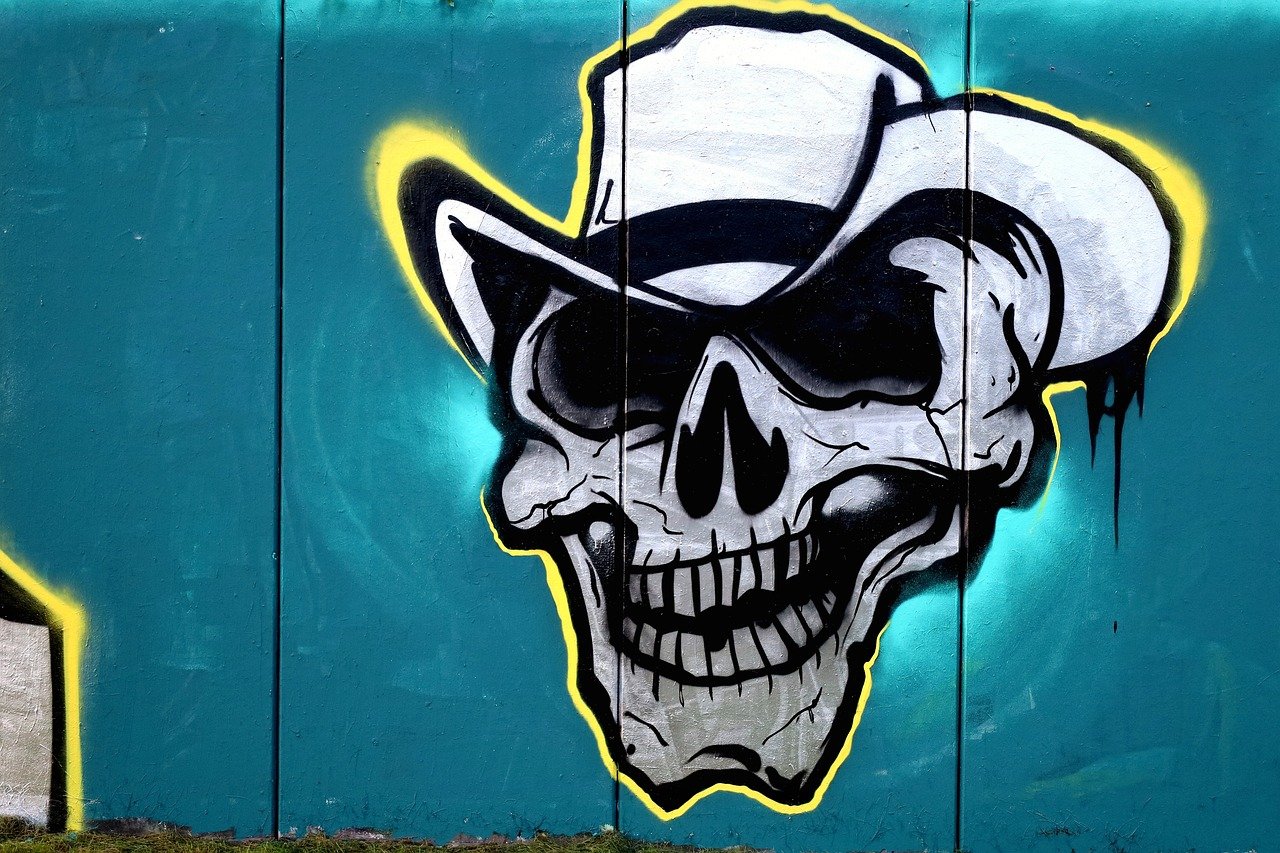
Showcasing Your Gouache Artwork
Once you’ve poured your heart and soul into creating stunning gouache paintings, the next exciting step is to showcase your artwork. Whether you’re looking to impress friends, share your work with the art community, or even sell your pieces, there are numerous ways to display your creations effectively. First, consider the framing options. A well-chosen frame can elevate your artwork, making it look professional and polished. You might opt for a classic wooden frame for a traditional look, or a sleek metal frame for a modern touch. Don't forget about matting; it can provide a beautiful border that enhances your painting's colors.
In addition to physical displays, the digital world offers fantastic opportunities to showcase your gouache artwork. Social media platforms like Instagram and Pinterest are perfect for sharing your creations with a vast audience. Make sure to take high-quality photos of your paintings, capturing the vibrant colors and details. Use natural light to avoid harsh shadows, and consider using a simple background to keep the focus on your art. You can even create a dedicated art page or profile to build a community around your work.
Another fantastic way to showcase your gouache artwork is by participating in local art shows or galleries. This not only gives you exposure but also allows you to network with other artists and art lovers. Look for community events or exhibitions that welcome new artists. You can also consider setting up an online shop on platforms like Etsy or Redbubble, where you can sell prints or originals of your work. This way, you can reach art enthusiasts from all over the world!
Lastly, don’t underestimate the power of storytelling. When you share your artwork, include a brief description of your inspiration or the techniques you used. This adds a personal touch that can resonate with viewers and make your art even more memorable. Remember, showcasing your artwork is not just about visibility; it’s about connecting with others through your creativity!
- What is the best way to photograph my gouache paintings?
Use natural light and a simple background. Ensure the painting is flat and avoid reflections for the best results.
- How can I find local art shows to participate in?
Check community boards, local art schools, or social media groups dedicated to artists in your area.
- Is it necessary to frame my gouache paintings?
While not mandatory, framing can protect your artwork and enhance its presentation, making it more appealing to viewers.
- Can I sell my gouache paintings online?
Absolutely! Platforms like Etsy or even your own website can be great places to sell your artwork.
Frequently Asked Questions
-
What is gouache paint and how is it different from watercolor and acrylic?
Gouache is a unique paint that combines the best of both worlds: it has the fluidity of watercolor and the opacity of acrylic. Unlike watercolors, gouache is more opaque, allowing you to paint over previous layers without losing the vibrancy of colors. On the other hand, it differs from acrylics in that it can be reactivated with water even after drying, making it a versatile choice for artists who like to experiment!
-
What tools do I need to start gouache painting?
To kick off your gouache journey, you'll need a few essential tools: a set of gouache paints (either student or professional grade), a variety of brushes (round and flat are great for starters), high-quality watercolor paper, and a palette for mixing colors. Don't forget a container for water and some paper towels to keep things tidy!
-
Can I use regular watercolor paper for gouache?
While you can use watercolor paper for gouache, it’s best to opt for heavier weight paper, ideally around 200 lb (or 425 gsm). This type of paper can handle the thickness and layering techniques that gouache requires without warping or buckling. So, think of it as giving your artwork a sturdy canvas to shine on!
-
How do I mix colors effectively with gouache?
Mixing colors with gouache is a fun process! Start by using a palette and a small amount of each color you want to combine. Remember, gouache is vibrant, so a little goes a long way. Mix in a circular motion, and don’t be afraid to experiment with ratios until you find the perfect shade. It’s all about creating that harmony in your artwork!
-
What are some common mistakes beginners make when using gouache?
One common mistake is using too much water, which can dilute the paint and lessen its opacity. Another is not allowing layers to dry before adding more, which can muddy your colors. Lastly, forgetting to clean your brushes properly can lead to unwanted color mixing. Just remember, practice makes perfect, and every mistake is a step towards improvement!
-
How can I display my gouache artwork?
Once you’ve created your beautiful gouache pieces, showcasing them can be just as exciting! You can frame them in a stylish frame to hang on your wall or even create a mini-gallery. For a digital approach, consider sharing your artwork on social media or art platforms. This way, you can reach a wider audience and connect with fellow art lovers!



















